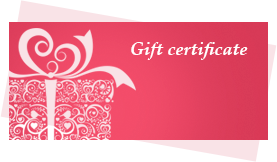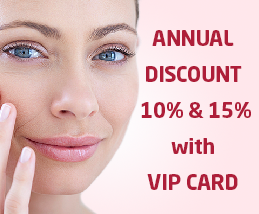LED Facial Mask - the most promising trend in Aesthetic Cosmetology This unique device is an advanced development of scientists who have more than thirty-five years of successful innovations experience in medicine and cosmetology.
What is it?
Phototherapy is a non-invasive method of facial and body care, which uses a narrow-band, non-thermal light energy to activate the natural processes of cell renewal and skin reparation. Using a clinically proven light-emitting diode (LED), photodynamic therapy provides excellent results for a wide range of common skin concerns, including aging skin and acne. Photodynamic therapy also provides treatment for hypersensitive and reactive skin and skin with rosacea, pigmentation and inflammatory diseases (eczema, dermatitis, psoriasis, etc.).
How does it work?
Under the influence of various LED-lights, the synthesis of collagen and elastin fibres gets enhanced, melanin gets blocked, the processes of growth and differentiation of cells increase, the fibrous tissues start being replaced by healthy collagen, and the stimulation of the microvasculature vessels growth in the affected areas is intensified. Under the influence of LED-lights, damaged cell membranes get restored and the cell growth is accelerated. As a result of the aging process, skin diseases or injuries, healthy skin cells are at risk and are unable to be regenerated properly. Skin has the ability to absorb certain wavelengths of light (colour) and to use them as a source of energy to activate specific cell functions for a therapeutic effect. Light therapy can reproduce these separate wavelengths (nm) to recharge the cells, to activate them, to regenerate and to rejuvenate them faster. Successful LED-phototherapy treatment is defined by the usage of clinically proven wavelengths, which allow for specific cellular responses. The essence of LED-therapy is in the delivery of medical and nutritional resources into deep skin layers. During the treatment procedure, cosmetic products are delivered with the help of LED-light waves. Due to this light exposure, micro-pores in the upper layers of the skin and the cell membranes open temporarily, allowing for the absorption of pre-applied active agent ingredients.
What is the light spectrum in phototherapy?
Our skin is the largest perception organ, absorbing 80% of the light, with only 20% of the light impulses getting to the brain via the optic nerve. Depending on the wavelength, the light of different colours can penetrate up to 30 mm into the skin layers, providing the following effects:
Red (628-780 nm): one of the most powerful ones:
The optimal treatment for mature skin that needs stimulation. Noticeable improvement of blood circulation and metabolism. This light increases the level of natural hydration and helps to retain moisture in the skin. It also provides a calming effect, reducing redness and inflammation. LED-phototherapy effectively tightens pores, regulates sebum production and improves blood circulation. It is used for alopecia treatment. Red LED Light also passed a medical certification for the treatment of rosacea. It immediately provides visible results after the first session: the skin becomes smoother, moisturised and gets a healthy glow. It penetrates into biological tissues up to 2.5 mm, being absorbed in the epidermis. About 30% of the incident energy reach the subcutaneous fat.
Green (496-566 nm): with a calming, harmonizing effect. Restores skin balance. It is ideal for skin which is irritated, sensitive and/or prone to erythema. Prevention of allergy desensitisation. Green LED Light improves skin immunity and its metabolism. It can be used after invasive procedures. It is also suitable for the prevention of age-related changes (for customers with fine wrinkles). It is ideal for skin with vascular changes (rosacea). This light provides skin cells with the energy which stimulates and activates the reparative function.
Blue (421-495 nm): has anti-inflammatory, soothing and healing properties. It is ideal for oily, inflamed and irritated skin. The Blue LED Light has very powerful antibacterial properties to treat acne and problem-prone skin. Exposure to the Blue LED Light is particularly effective for the treatment of acne, as it combats the propionic bacterium and is an effective alternative for those customers who do not respond to other types of acne treatment or antibiotics therapy, and especially for teenage or darker skin tones. Treatment of acne with the Blue LED Light is also excellent to prevent the outbreak of rashes and bacterial skin infections in the future. Blue LED Light provides all the antibacterial benefits of sunlight, but without any harmful and damaging UV-rays.
Yellow (567-589 nm): stimulates lymphatic drainage and blood circulation. It is used to care for oily, combination, coarse-pored and sensitive skin. It has anti-inflammatory, antiseptic and anti-fungal functions. It improves facial complexion and nourishes the skin with oxygen. It is ideal for skin prone to swelling, oedema and dark circles in the orbital zone. Yellow LED Light is used to treat lymphatic stasis and oxygen deficiency. It has an anti-stress effect on the skin.
Blue (470 nm): is used when caring for hypersensitive, dry skin. It softens, moisturizes, calms and slows down premature aging by providing a therapeutic effect upon it. It is good for fading highly dehydrated skin. It provides long-term moisture retention in the skin and stimulates collagen synthesis. It is ideal for the scaling-prone skin. Could also be used for relaxation purposes.
White (510-810 nm): anti-stress and strengthening effect. White LED Light has a strong detoxifying effect. It is safe for clients with impaired thyroid function, and is useful in any cosmetic procedure, since it enhances the procedure’s effect and produces a positive result. It has a soothing and toning effect, and is a good conductor.
The longer the wavelength, the deeper the penetration of the light.
Results and Safety
The photodynamic therapy method produces visible results in a short period of time. Phototherapy instantly revitalises tired and dull skin. Even after the first treatment, the skin becomes noticeably moisturised, smooth and radiant. Reddening and skin irritation are noticeably reduced. A complete course of corrective procedures provides significant and extended results of improved appearance and healthy skin. There is no heat exposure in the LED-phototherapy since it uses just the light spectrum, which does not contain harmful ultraviolet and infrared rays, and, therefore, cannot cause any damage to the skin tissue.
The safety of this method has been proven by multiple clinical studies for all skin types, including the most sensitive ones.
LED-therapy does not cause photosensitivity, thus it is safe at any time of the year and can be performed before and after sun exposure.
This method excludes any risks of irritation or side effects, which are characteristic for more invasive procedures.
Photodynamic therapy (PDT) is safe, effective and simple.
What does a LED light therapy session look like?
A LED lamp is placed a few centimetres from the face or the treatment zone. The skin should be well-cleaned; no make-up is allowed. The duration of the session, its intensity and the light colour depend on the chosen therapy format. The procedure is absolutely painless.
Only the feeling of warmth is present in the perimeter of the treatment zone.
Eyes should be protected during the session.
Duration of the first session::
- from 20 to 30 minutes when it is used for care treatments;
- 45 minutes with only a LED-mask.
We recommend 1-2 sessions per week during 4 - 6 weeks, then one session per month during 4 months. This frequency is by all means suggestive and can vary depending on the therapeutic needs. The first results are visible after 1-3 sessions. Skin changes gradually, and the process takes several months after the treatment, while collagen is being formed.
THE TOTAL OF 8 PROCEDURES TWICE A WEEK WILL IMPROVE ANY SKIN PROCESSES BY 72% - FROM REJUVENATION AND ACNE FIGHTING TO REHABILITATION AFTER RESURFACING AND PLASTIC SURGERY.
The cost of the procedure (CHF):
- 50 min 120.-















